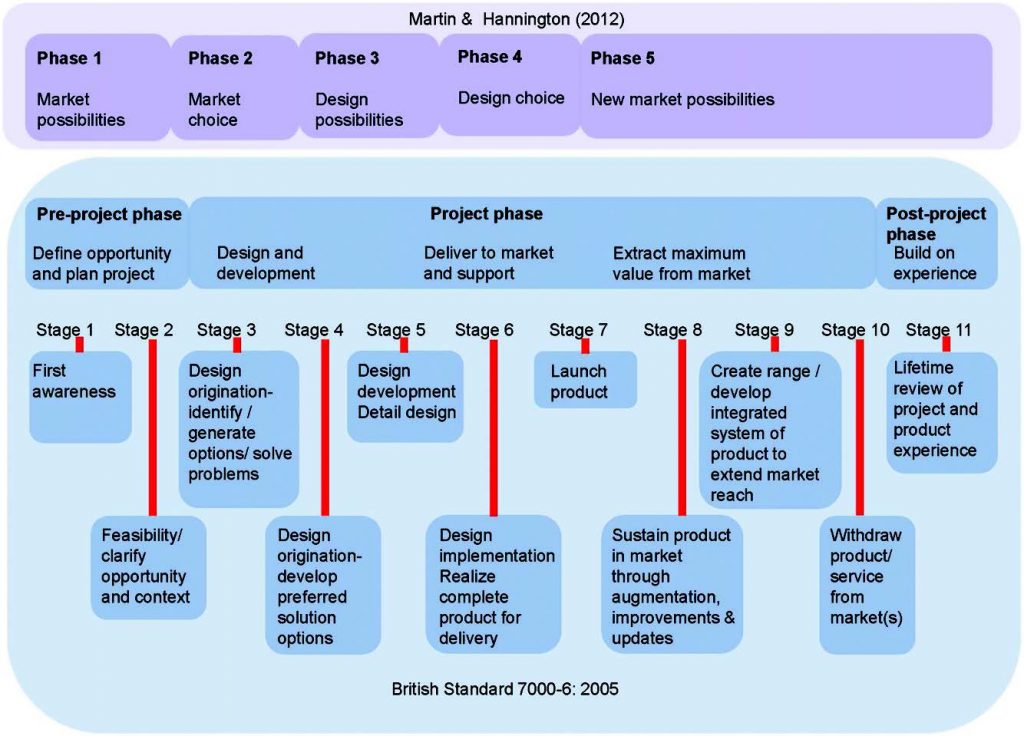There are many design processes advocated for use in new product development. The Loughborough User-Centred Assistive Technology (LUCAT) design process is central to the order of methods, for finding information and making decisions, alongside heuristics. Heuristics (short cuts) help designers make decisions quickly.
The five phases are based on the Bruce Hannington (2012) bring together the stages defined in the British Standard for Design Management (2005) within the context of an AT new product development.
The process was defined from research work reviewing over 200 methods and heuristics. (Torrens 2015, Torrens 2018). The diagram below provides an explanation of the relationship of methods and heuristics within the process.
Cross phase
Cross phase refers to the methods and heuristics that are commonly used in all the phases of a new product development process. They are repeatedly used in gaining additional knowledge, insights, and validation towards evidence-based decision-making. Most importantly, it includes ethics.
Phase 1
Identifying Market possibilities includes: planning, scoping and definition; project parameters explored and defined; first awareness; feasibility, clarify opportunity and context; insights; gain consensus.
Phase 2
Defining Market choice includes: exploration, synthesis, and design implication; immersive research and design ethnography; design origination-identity, Brand, generate propositions/solve problems; propositions; Ideation; generation of product design specification; validate with market; individual and consensus.
Phase 3
Generating Design possibilities includes: concept generation, early prototyping iteration, participatory and generative design activities; design origination-develop preferred solution options; design development; detail design; validate with market; gain consensus.
Phase 4
Making Design choices includes: evaluation, refinement, and production; iterative testing and feedback; design implementation; realize complete product for delivery; testing and validation to standards and industry guidelines; Launch product.
Phase 5
Identifying New market possibilities and reflecting on the performance of past products includes: monitoring of product in market; awareness of new markets; feasibility, clarify opportunity and context; insights; sustain market through improvement; create range/develop integrated systems of product to extend market reach; lifetime review and product experience.

Useful links
